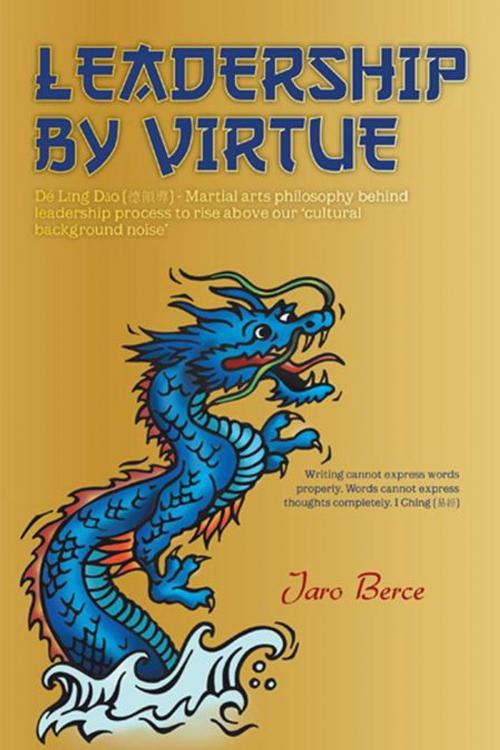Leadership by Virtue
Dé Ling Dao (???) - Martial Arts Philosophy Behind Leadership Process to Rise Above Our ‘Cultural Background Noise’
Business & Finance, Management & Leadership, Management, Nonfiction, Reference & Language, Reference, Health & Well Being, Self Help, Self Improvement| Author: | Jaro Berce | ISBN: | 9781466965102 |
| Publisher: | Trafford Publishing | Publication: | February 6, 2013 |
| Imprint: | Trafford Publishing | Language: | English |
| Author: | Jaro Berce |
| ISBN: | 9781466965102 |
| Publisher: | Trafford Publishing |
| Publication: | February 6, 2013 |
| Imprint: | Trafford Publishing |
| Language: | English |
The story is showing from a first-person perspective the internal growing up of a leadership process based on non-Western approach. The main character, brought up in Europe and therefore used to Western cultural background noise although practicing Chinese martial arts, has to learn and understand the differences brought by Far East principles if he wants to grasp leadership from a different angle. On the whole, a Western leadership is thought and understood as an external process of a person that influences others. Most of leadership and management books that deal with leadership and managers describe what and how to do it to be more efficient and successful. They describe tools to use to do it. This is called an external process. Outward, because others see leaders as how they behave or how they use those tools in a leadership style and/or process. But we all live our lives and perceive surrounding environment only from our internal eyes. Therefore, the focal questions raised in a book are the following: Do all leaders have the same fears, problems, and difficulties or happiness, pleasure, and delight in being what they are? What are their feelings when leading people, making decisions, or taking responsibility? How do they sense and perceive their subordinates? In a book, those are called internal issues and are dealt with and described through a different approachan approach that is based on the Far East mentality and shown through Chinese martial arts and Chinese philosophy. The book has eighteen (18) chapters. Chapters one to five are dedicated to the background setting and the evolution of the story and characters; Chapters six to nine are devoted to open different approaches and mentality that is coming from Far East and Martial arts philosophy and in parallel gradually introducing difficulties in leadership process and (miss)understanding of those Far East concepts; in a Chapter ten main character is pushed to the limits of solving leadership dilemma and private concerns; Chapter eleven is dedicated to open the eyes about the new concepts; in a Chapter twelve the foundation of Far East philosophy behind Martial arts is described that would be further on used for the Leadership by Virtue principle; Chapters thirteen to seventeen are telling one by one and thus portraying internal concepts used in Martial arts principles and Eastern philosophy and how to transfer those into (internal) leadership development; final Chapter eighteen is dedicated to merge those Far East and Martial arts concepts and philosophies with known Western ones and thus opening a new entanglement approach proposed with the use of the Leadership by Virtue.
The story is showing from a first-person perspective the internal growing up of a leadership process based on non-Western approach. The main character, brought up in Europe and therefore used to Western cultural background noise although practicing Chinese martial arts, has to learn and understand the differences brought by Far East principles if he wants to grasp leadership from a different angle. On the whole, a Western leadership is thought and understood as an external process of a person that influences others. Most of leadership and management books that deal with leadership and managers describe what and how to do it to be more efficient and successful. They describe tools to use to do it. This is called an external process. Outward, because others see leaders as how they behave or how they use those tools in a leadership style and/or process. But we all live our lives and perceive surrounding environment only from our internal eyes. Therefore, the focal questions raised in a book are the following: Do all leaders have the same fears, problems, and difficulties or happiness, pleasure, and delight in being what they are? What are their feelings when leading people, making decisions, or taking responsibility? How do they sense and perceive their subordinates? In a book, those are called internal issues and are dealt with and described through a different approachan approach that is based on the Far East mentality and shown through Chinese martial arts and Chinese philosophy. The book has eighteen (18) chapters. Chapters one to five are dedicated to the background setting and the evolution of the story and characters; Chapters six to nine are devoted to open different approaches and mentality that is coming from Far East and Martial arts philosophy and in parallel gradually introducing difficulties in leadership process and (miss)understanding of those Far East concepts; in a Chapter ten main character is pushed to the limits of solving leadership dilemma and private concerns; Chapter eleven is dedicated to open the eyes about the new concepts; in a Chapter twelve the foundation of Far East philosophy behind Martial arts is described that would be further on used for the Leadership by Virtue principle; Chapters thirteen to seventeen are telling one by one and thus portraying internal concepts used in Martial arts principles and Eastern philosophy and how to transfer those into (internal) leadership development; final Chapter eighteen is dedicated to merge those Far East and Martial arts concepts and philosophies with known Western ones and thus opening a new entanglement approach proposed with the use of the Leadership by Virtue.















